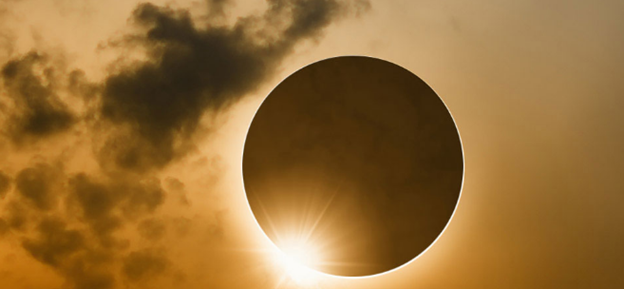Wednesday, March 27, 2024
Blog topics:
By Joel Thacker
 When it comes to experiencing the Total Solar Eclipse on Monday, April 8th (FYI – it’ll be one you won’t want to miss, considering the next one is coming on September 14, 2099), it’s understandable that most of our collective attention will be on the skies as we are plunged into roughly 230 seconds of late afternoon darkness.
When it comes to experiencing the Total Solar Eclipse on Monday, April 8th (FYI – it’ll be one you won’t want to miss, considering the next one is coming on September 14, 2099), it’s understandable that most of our collective attention will be on the skies as we are plunged into roughly 230 seconds of late afternoon darkness.
Yet while all of that happens, it’s important to keep in mind that there are plans that have already been formed to make sure what’s happening on the ground – with our critical infrastructure – that will make it seem as though it’s just another (albeit memorable) Spring day in Indiana.
If you wonder why that’s important, hundreds of thousands of people are expected to visit the Hoosier State to get a better look at the eclipse. More than 3.5 million Hoosiers live in the path of totality.
In fact, according to a recent story in Forbes, data from GreatAmericanEclipse.com, as many as 581,000 people could drive into its path through Indiana, making it the second-busiest state on eclipse day – after Texas. After all, Indiana is also the final place where it’s possible that four minutes of the solar eclipse totality will occur.
That’s why public safety professionals from the Indiana Department of Homeland Security (IDHS), together with a large group of our state partners, as well as officials from communities, large and small, have formed a strategic plan to ensure that everyone is able to travel safely in and out of wherever they go. Counterparts in other states have also been helpful in understanding the magnitude of this event.
At the same time, Indiana’s plan is designed to help ensure cybercriminals aren’t able to distract us with any sort of cyber incidents, especially as it regards our local governments, businesses and schools. In doing so, Indiana is treating this as a three-day event, rather than three-and-a-half minute activity, so as to be fully prepared to help ensure that everyone’s experience is achieved safely.
Just as the IDHS plans for and responds to natural disasters and emergencies, during the eclipse, the state will operate its emergency operations center, observing the event as it takes place and being prepared to assist when needed. Additionally, the work that’s being done ahead of time covered everything from communications and operations, education and the public’s safety and health to logistics and resources, as well as the transportation, viewing, lodging and local support that would be necessary.
As part of that strategy and planning, the state worked closely with numerous utilities, large and small, in communities from across Indiana, as well as energy companies and mobile phone providers, to pull it all together. The state also hosted a series of “eclipse coffee talks” that made it possible for emergency management directors to discuss a range of topics and share solutions.
 The Indiana planning resource, eclipse2024.in.gov, is a great tool to help everyone understand where and how to enjoy the eclipse, including the importance of proper eyewear and the challenges that some of our cities and towns could experience during the course of it all.
The Indiana planning resource, eclipse2024.in.gov, is a great tool to help everyone understand where and how to enjoy the eclipse, including the importance of proper eyewear and the challenges that some of our cities and towns could experience during the course of it all.
IDHS is one of the agencies whose job description is defined as looking out for the well-being of all Hoosiers. It is an around-the-clock responsibility that public safety personnel proudly embrace. IDHS has led planning efforts for this event for more than year to learn from other states that have experienced an eclipse event and prepare manpower and resources.
If you work in public safety and need help planning for the April 8 event, the state also offers a tool to help your efforts by downloading the Indiana 2024 Total Solar Eclipse Special Event Planning Guide.
Whether you’re at home, at work, at school, or with your family, or you’re visiting our state for the eclipse, we hope your experience is safe and memorable!

